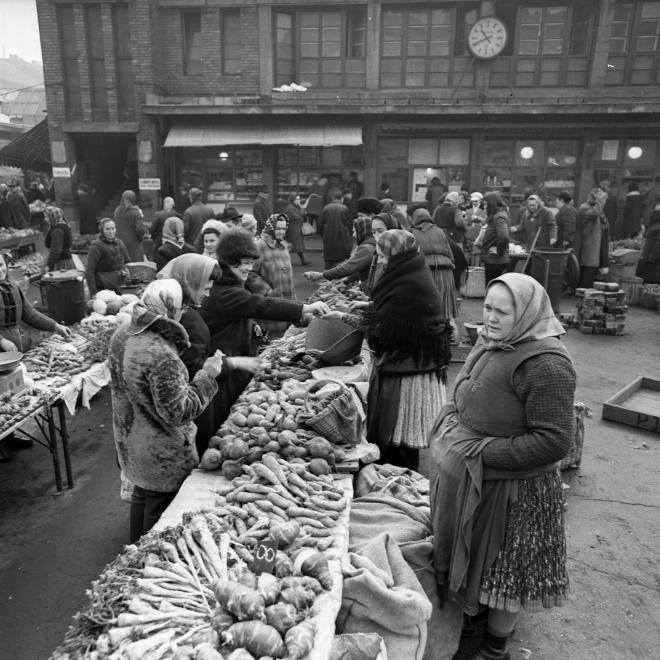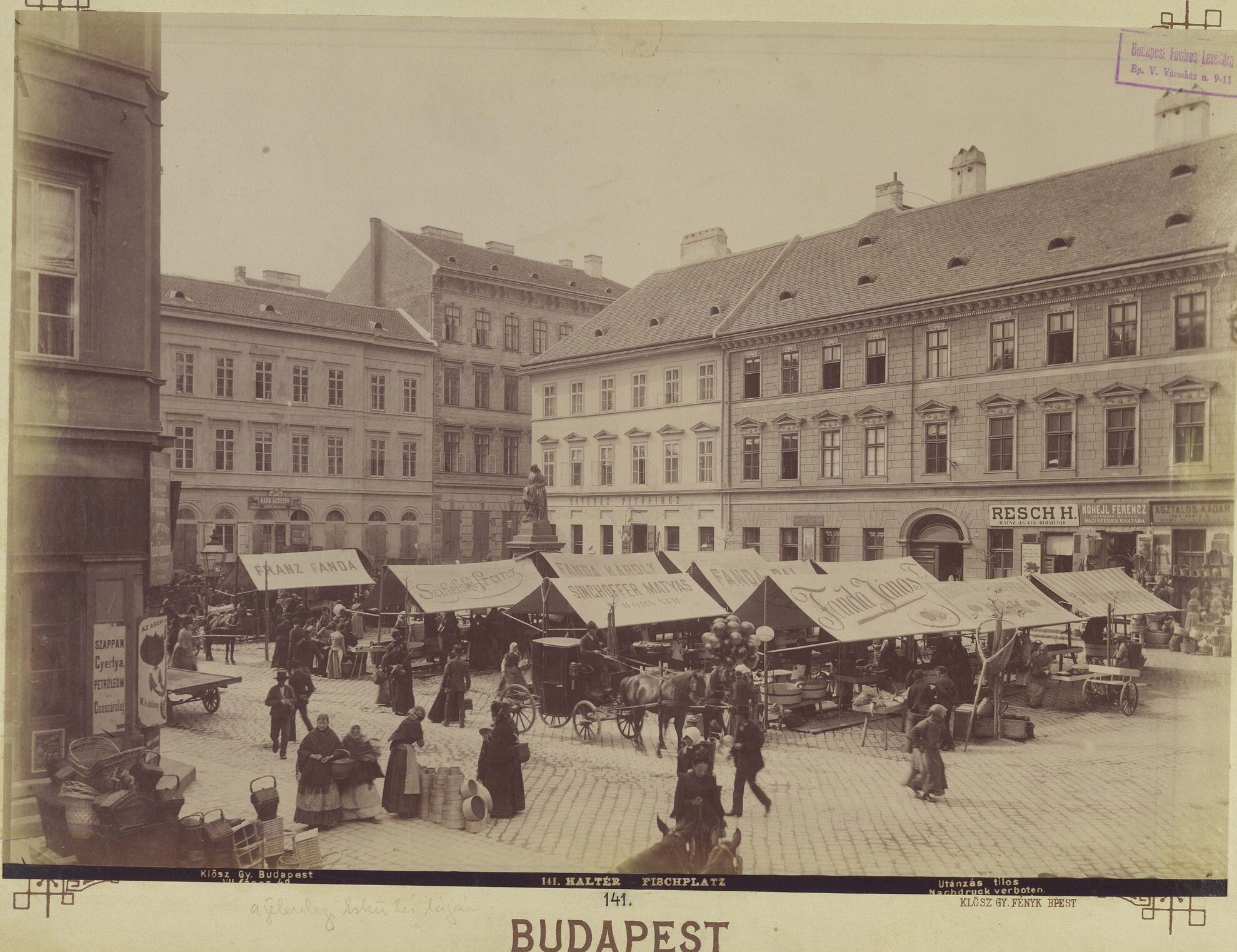
Hal tér (Fischplatz), located at the corner of Torony utca and Duna utca, facing Irányi (Kalap) utca. The photo was taken by György Klösz in roughly 1894. The little square housing the market disappeared through alterations connected to the construction of Elizabeth Bridge in the early 1960s.
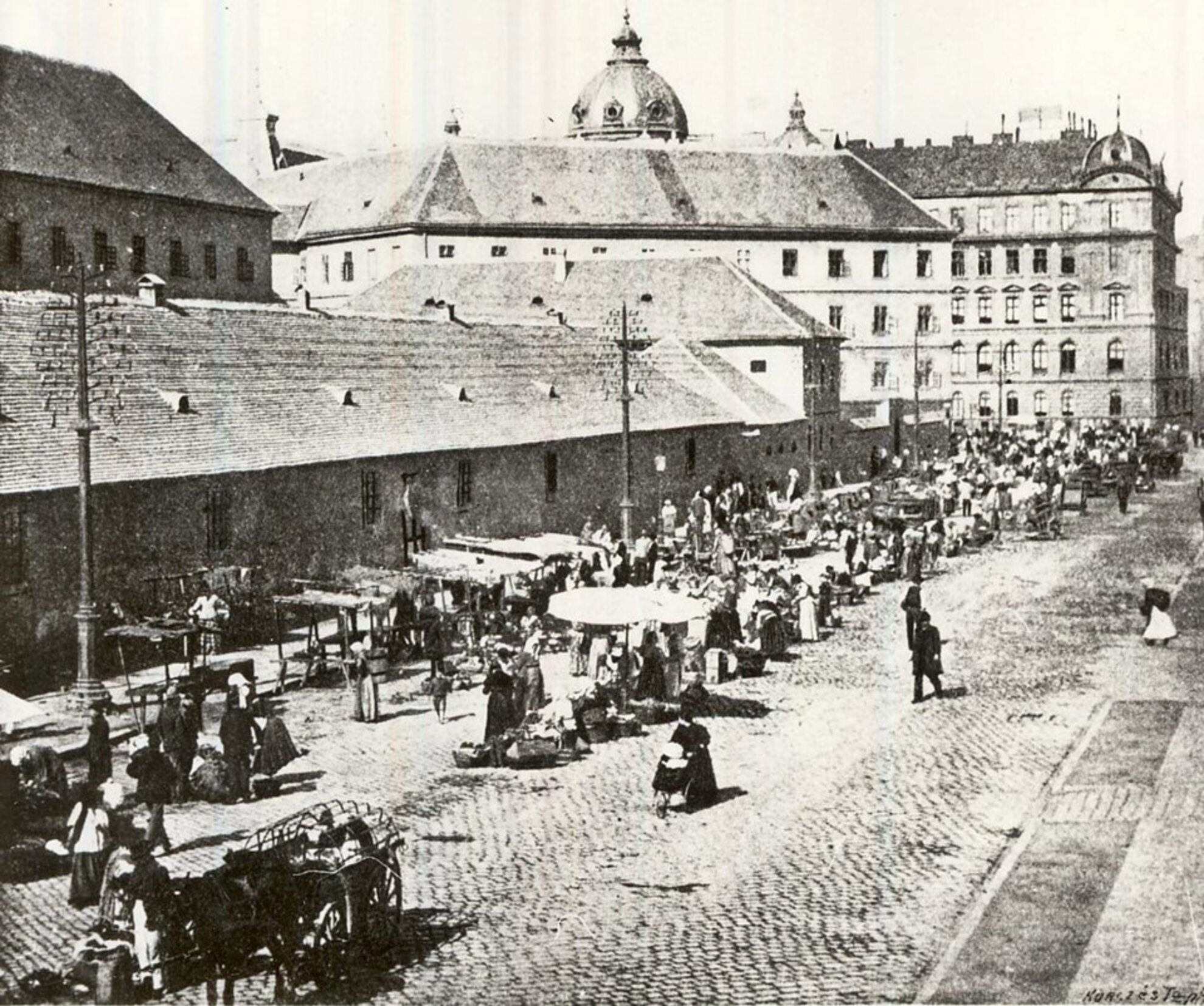
The Downtown Market (Hold utcai piac) before being taken over by famous chefs and floods of tourists after its renovation in 2014.
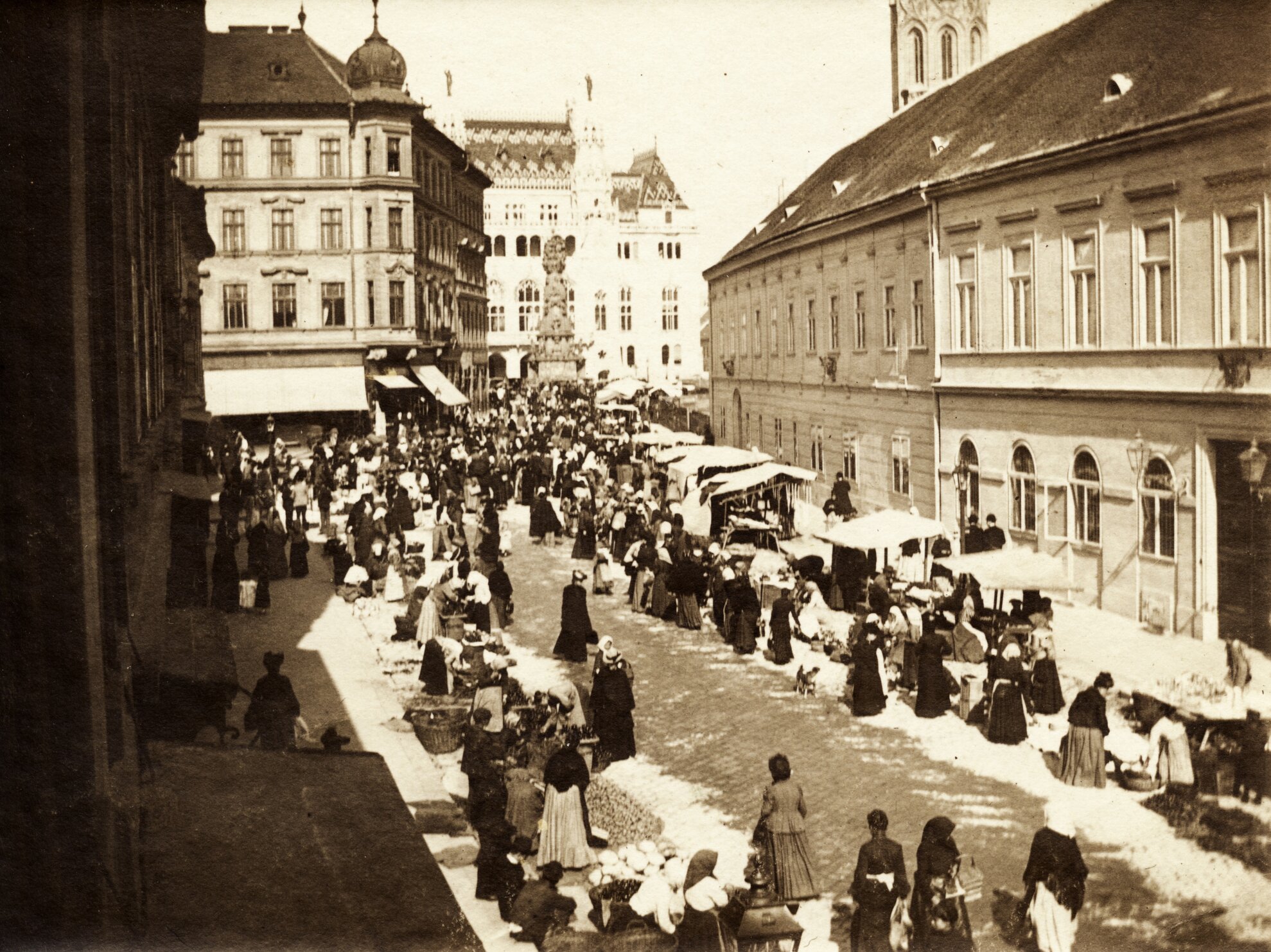
The lively market on Tábornok utca in Buda Castle, as seen from Dísz tér, looking towards Szentháromság tér.
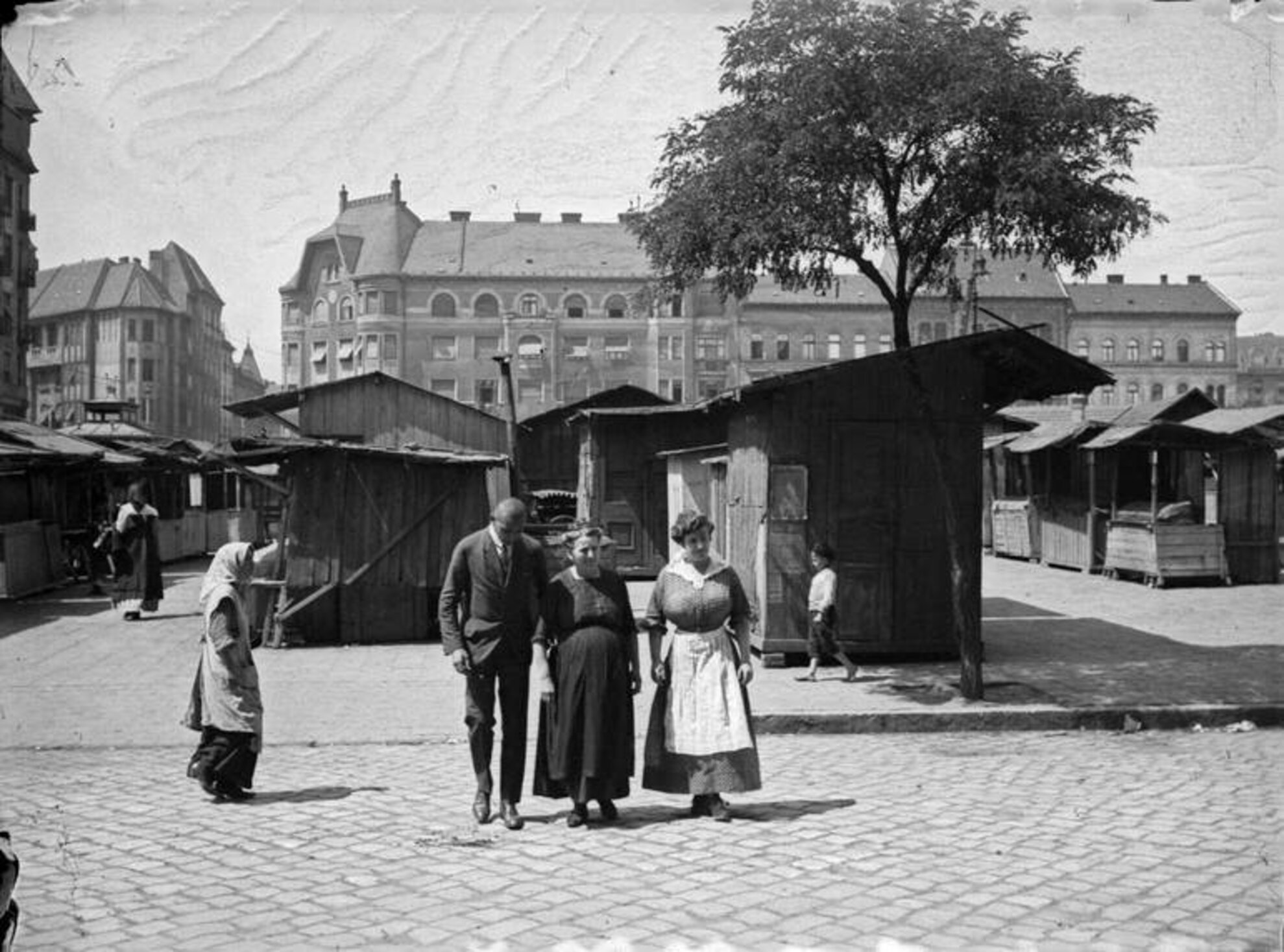
Members of writer Géza Bereményi’s family at Teleki tér market in 1926, captured by famous Hungarian photographer André Kertész.
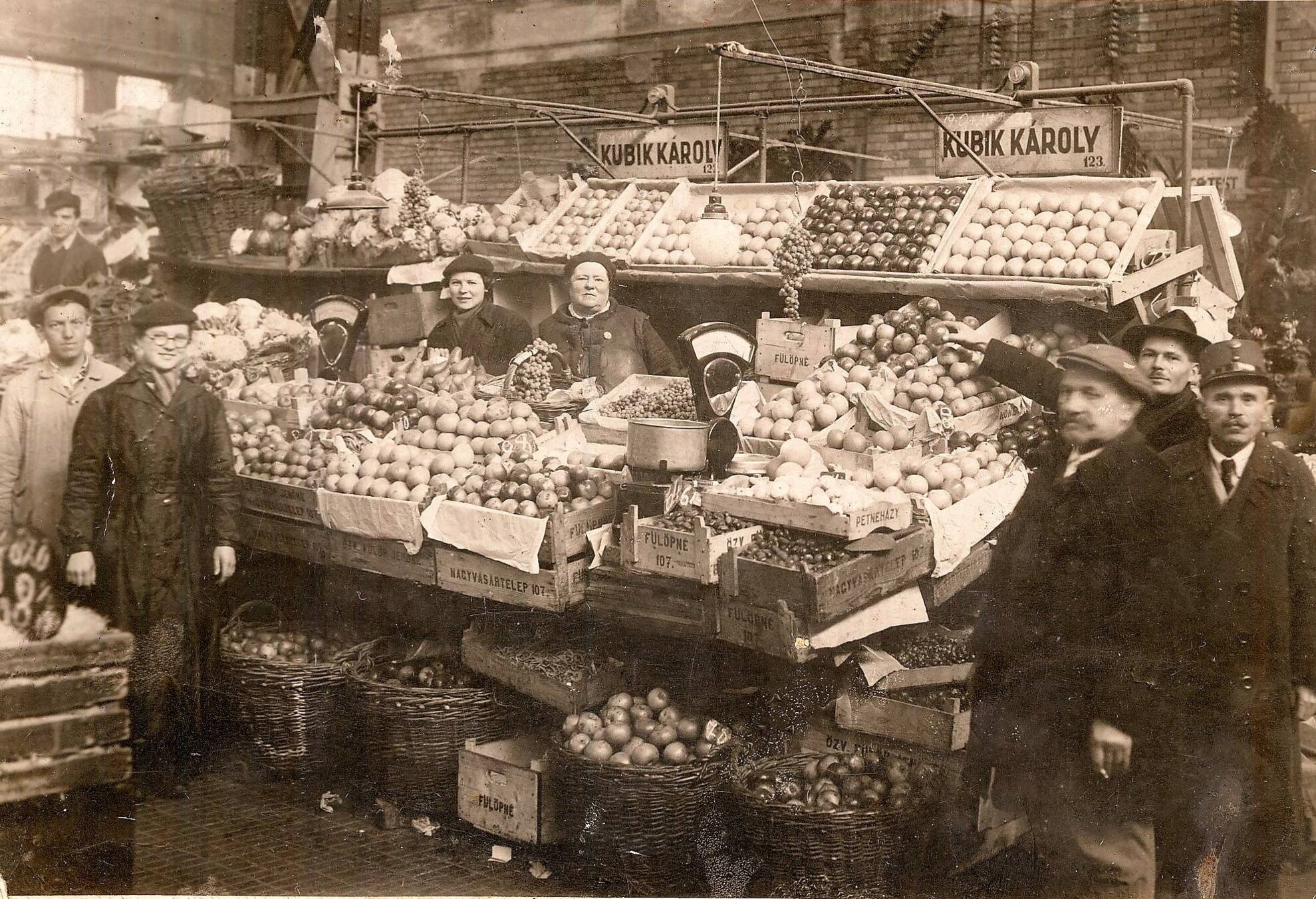
Stall number 123 at Hunyadi tér market in the 1930s. Although the picture was taken during the Great Depression, it seems like the vendors had plenty of goods on offer.
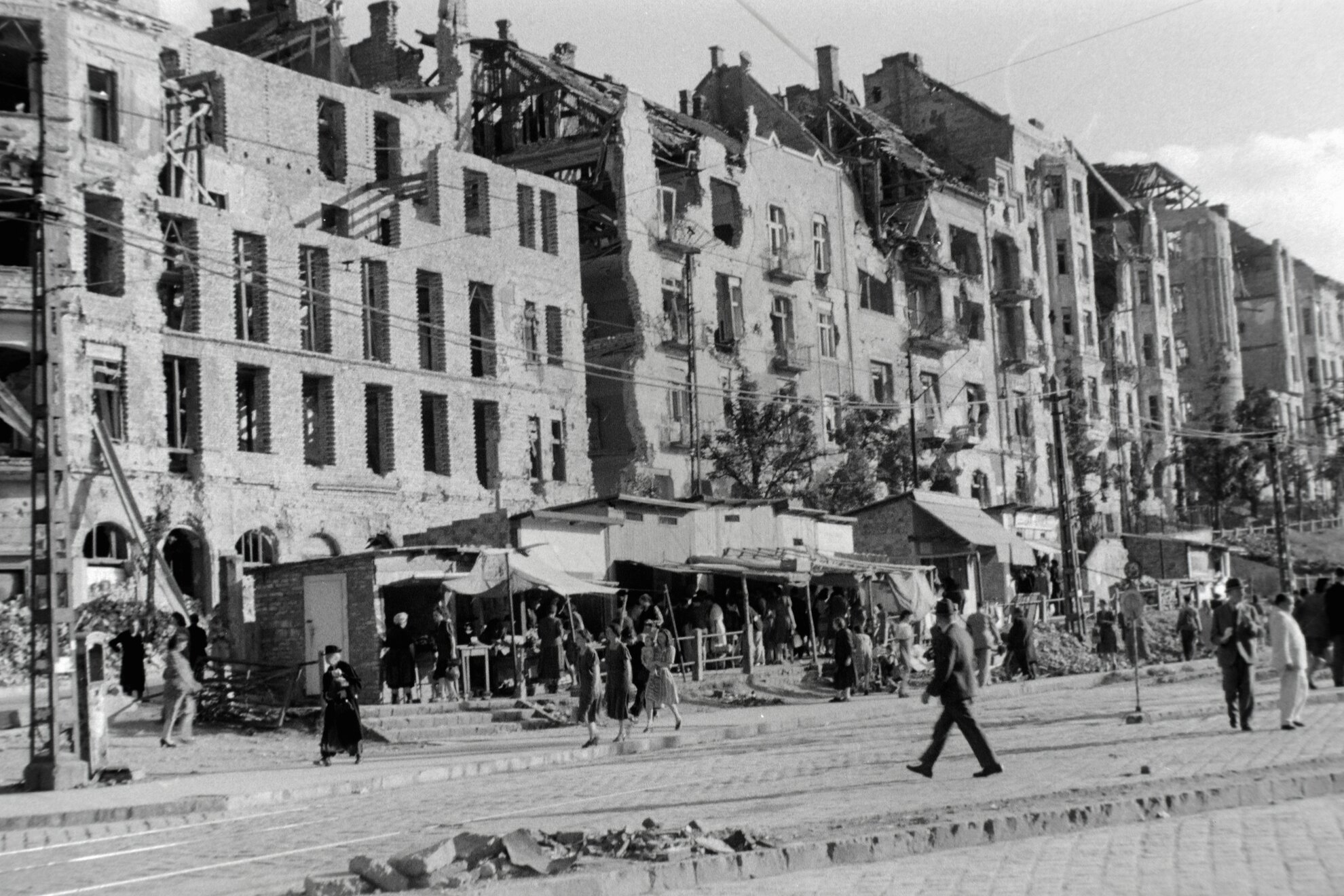
A temporary market at Széll Kálmán tér after the war-time Siege of Budapest. There was an immense shortage of food in the year following World War II, people often had to offer their valuables and jewellery in exchange for a bag of potatoes or a loaf of bread.
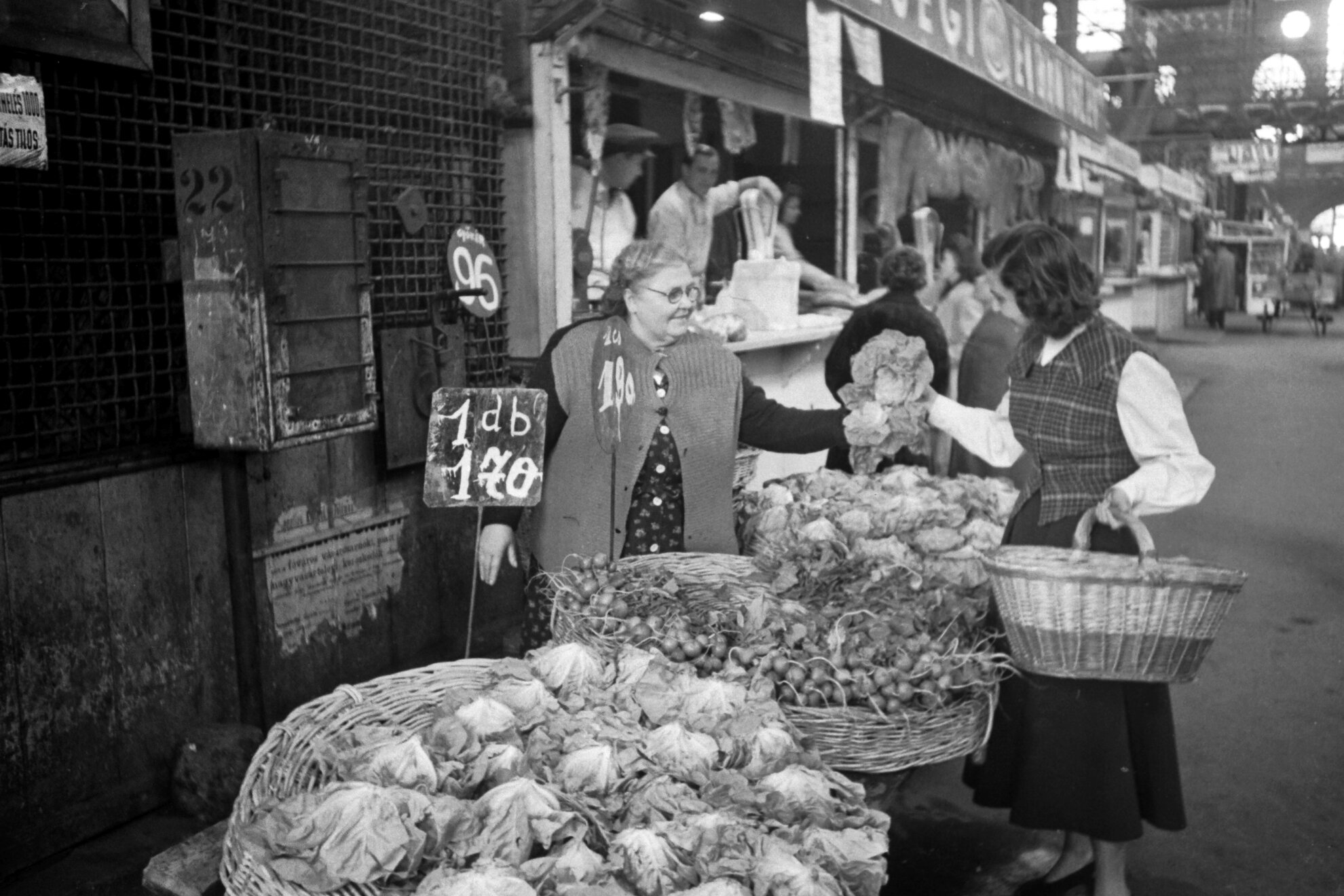
Fővám (Dimitrov) tér and the Great Market Hall in 1949. The picture shows actress Magda Surányi shopping, probably in spring or early summer, based on the price of lettuce: one forint and 70 fillérs.
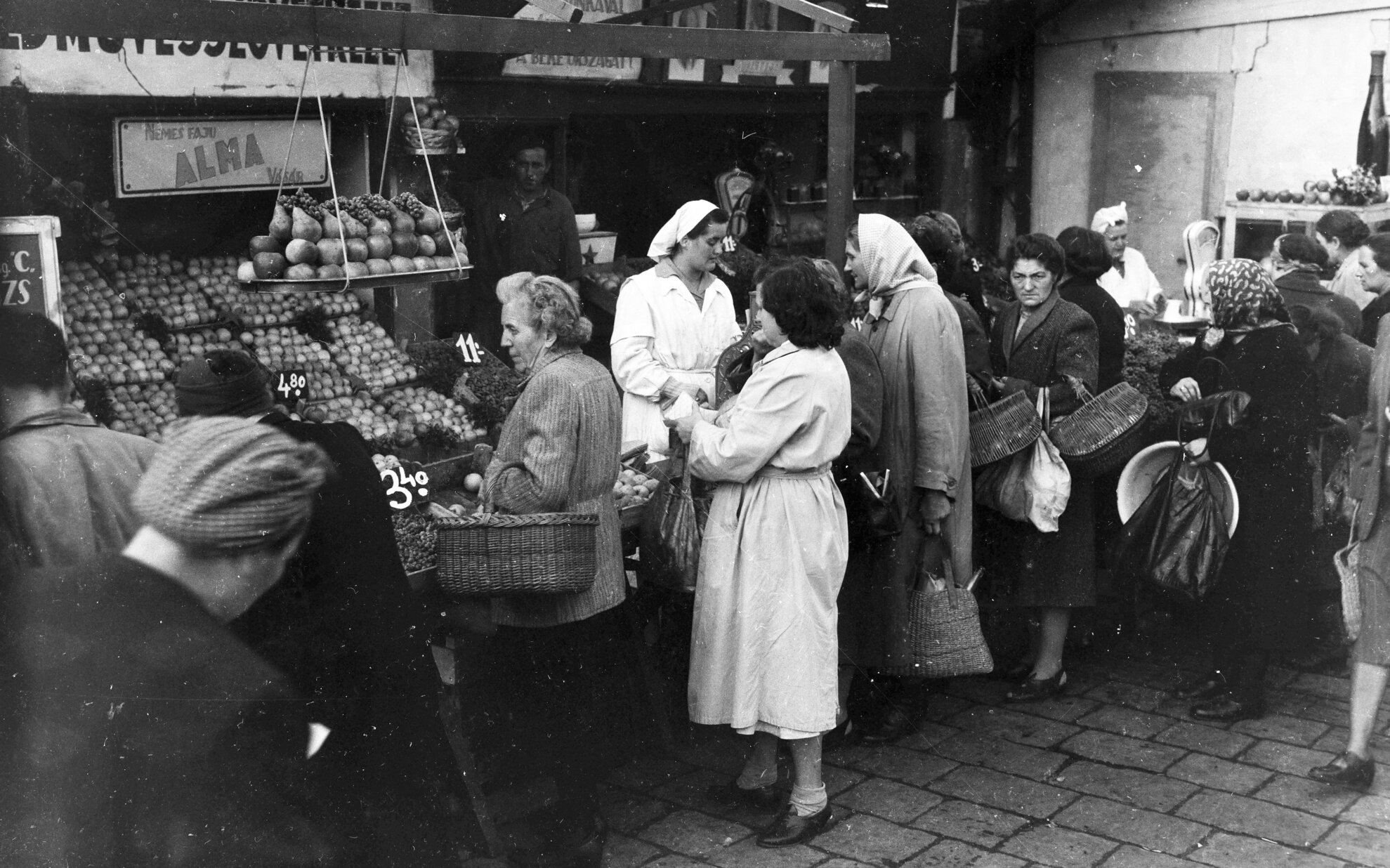
Széll Kálmán (Moszkva) tér market in 1954, at the location of today’s metro line 2 entrance.
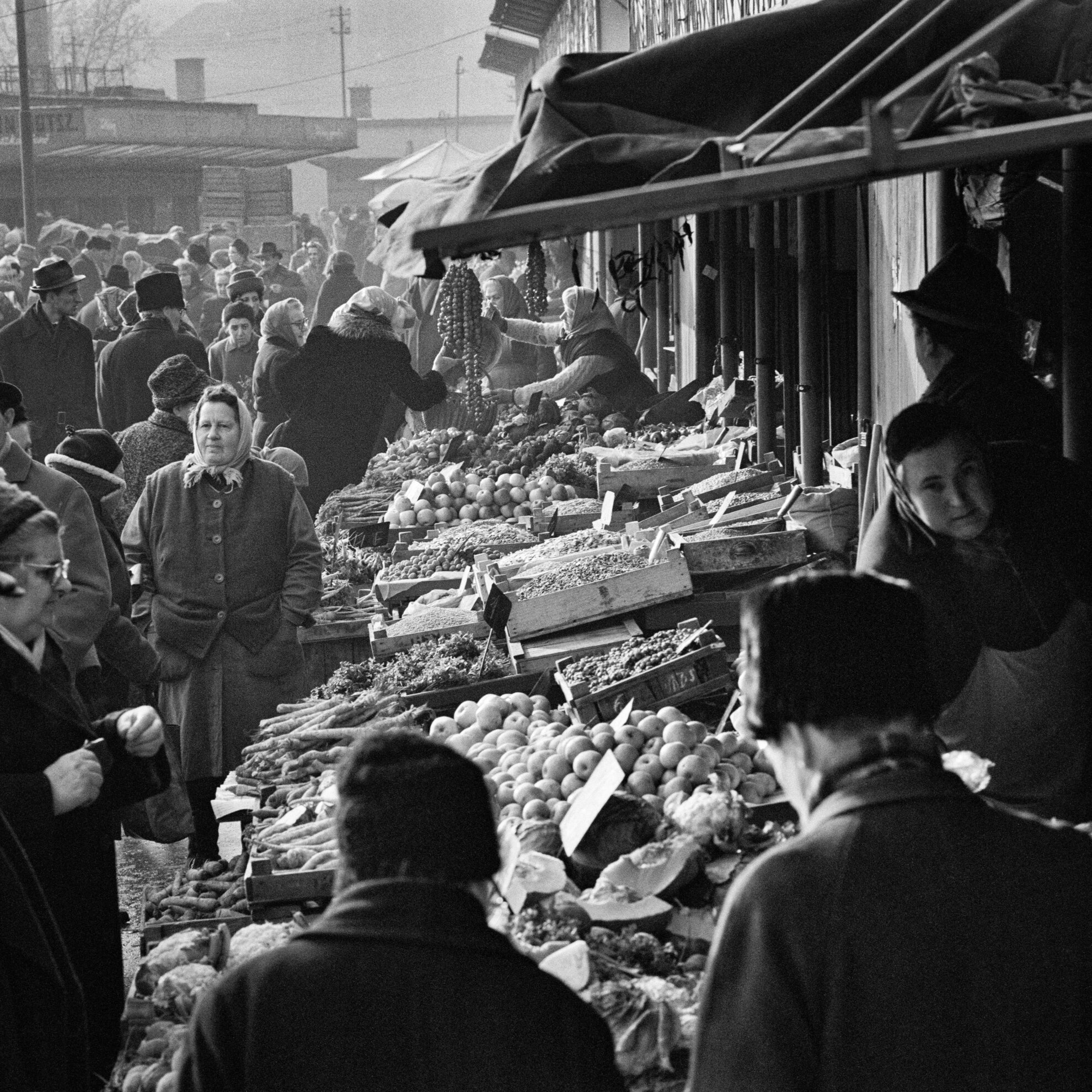
Lehel (then Élmunkás, ‘Hard Worker’) tér market in 1958. There was a public cemetery here until 1890, and this unregulated market was set up afterwards.
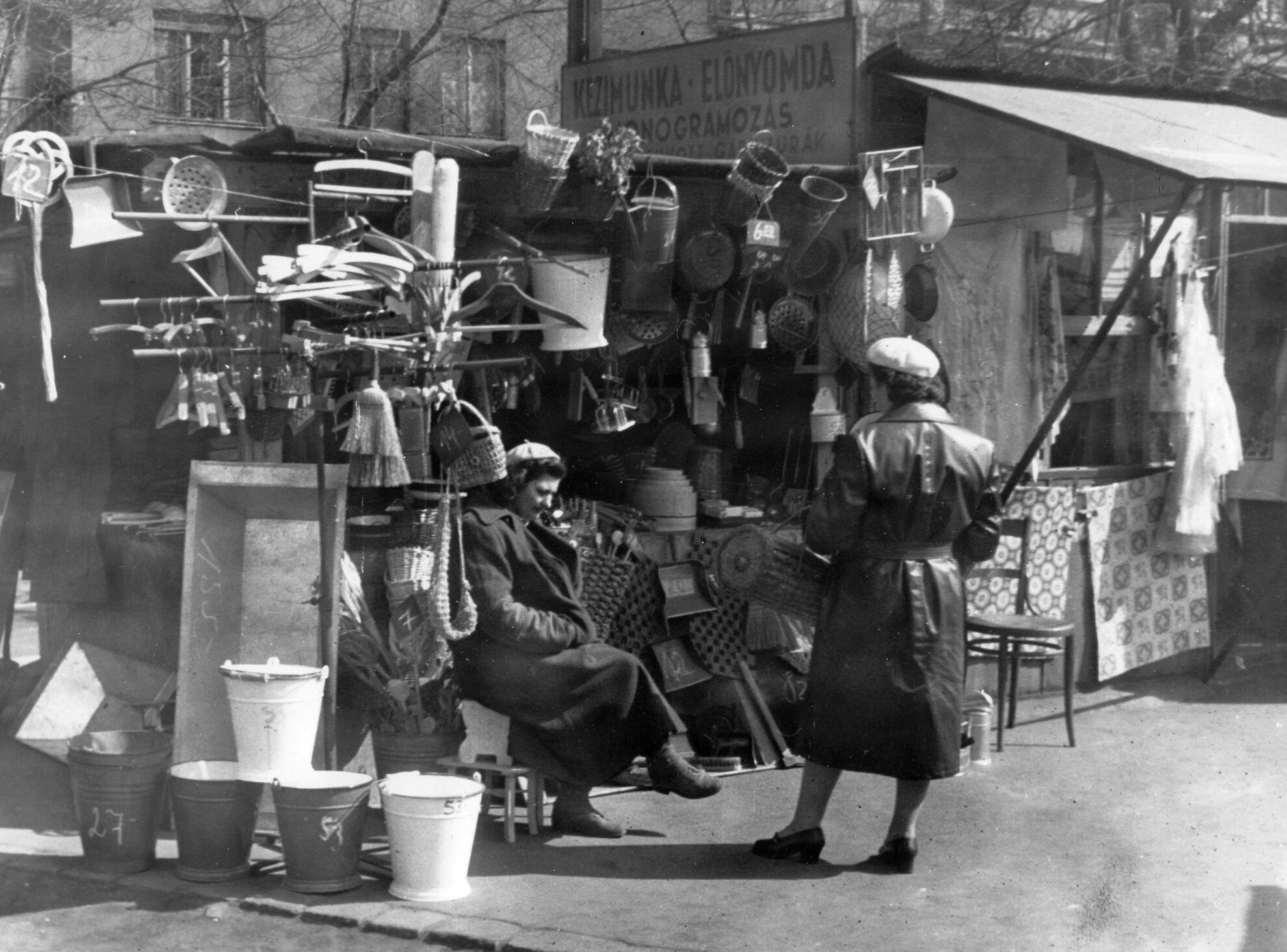
Markets offered pots, pans and other household items as well as fresh groceries in 1959.
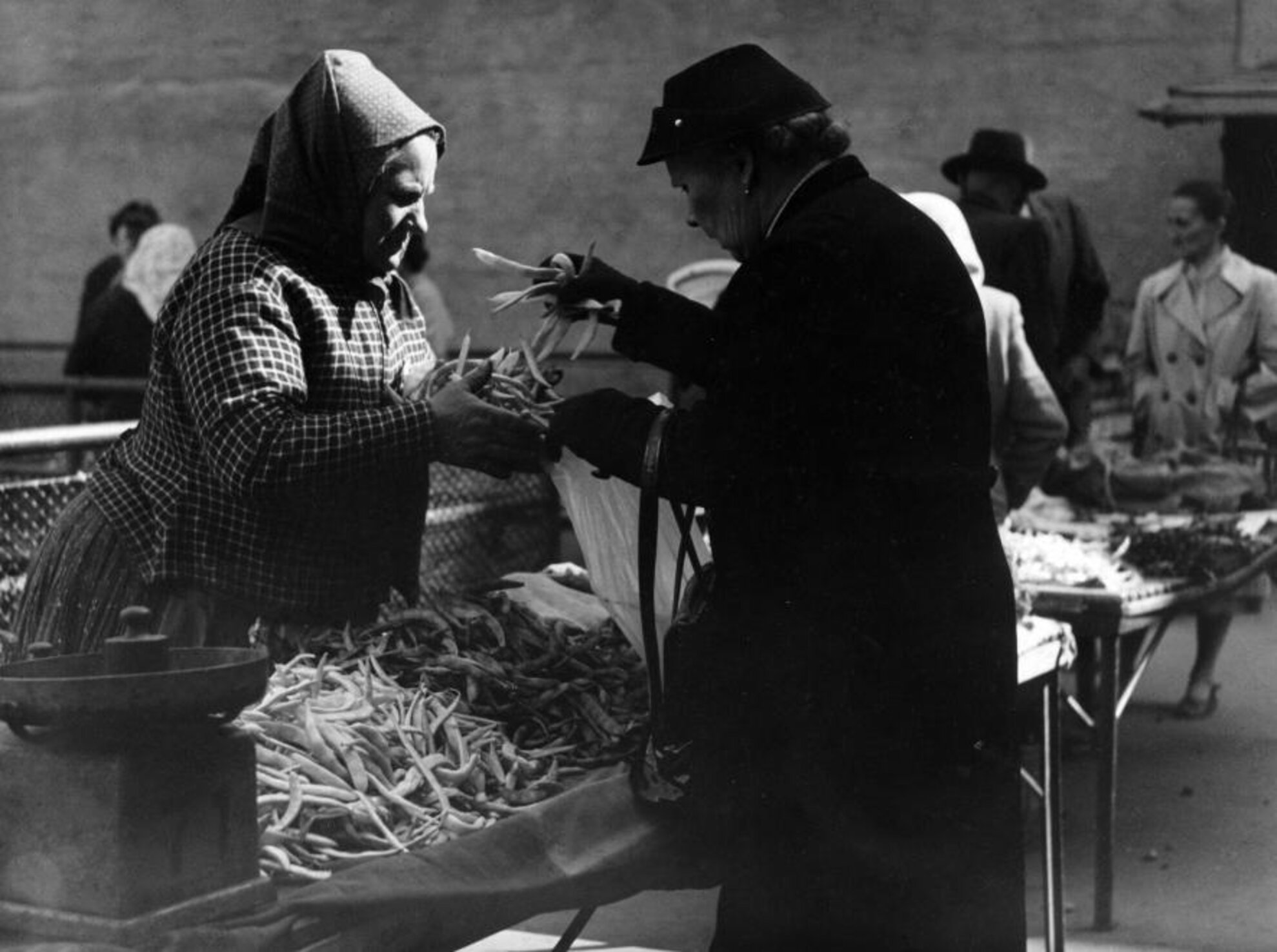
Shopping for beans at the market on Fény utca in 1959.
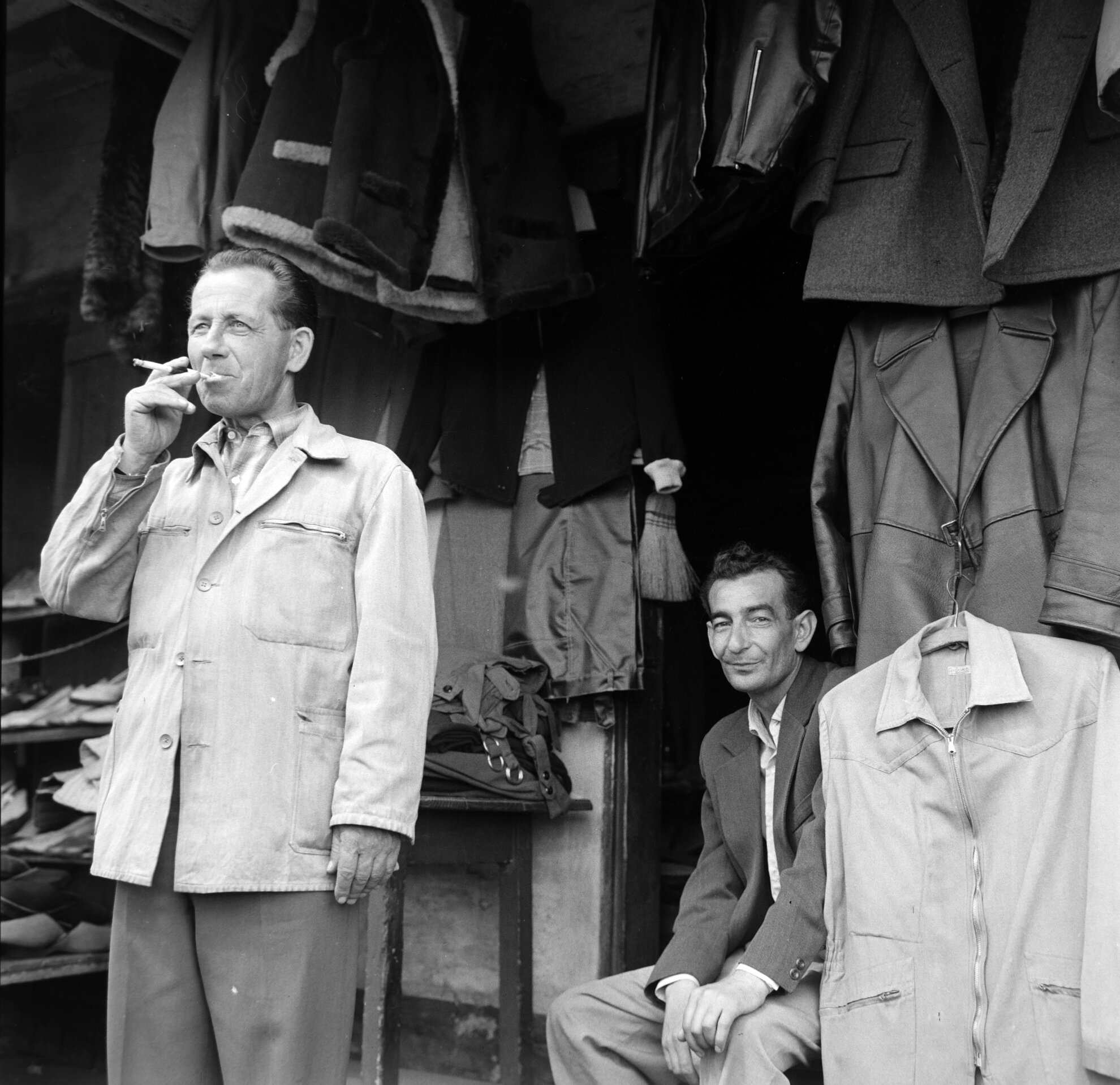
Books, furniture, toys, fur coats, Western jeans and stockings – whatever you wanted could be found at the secondhand market on Ecseri út.
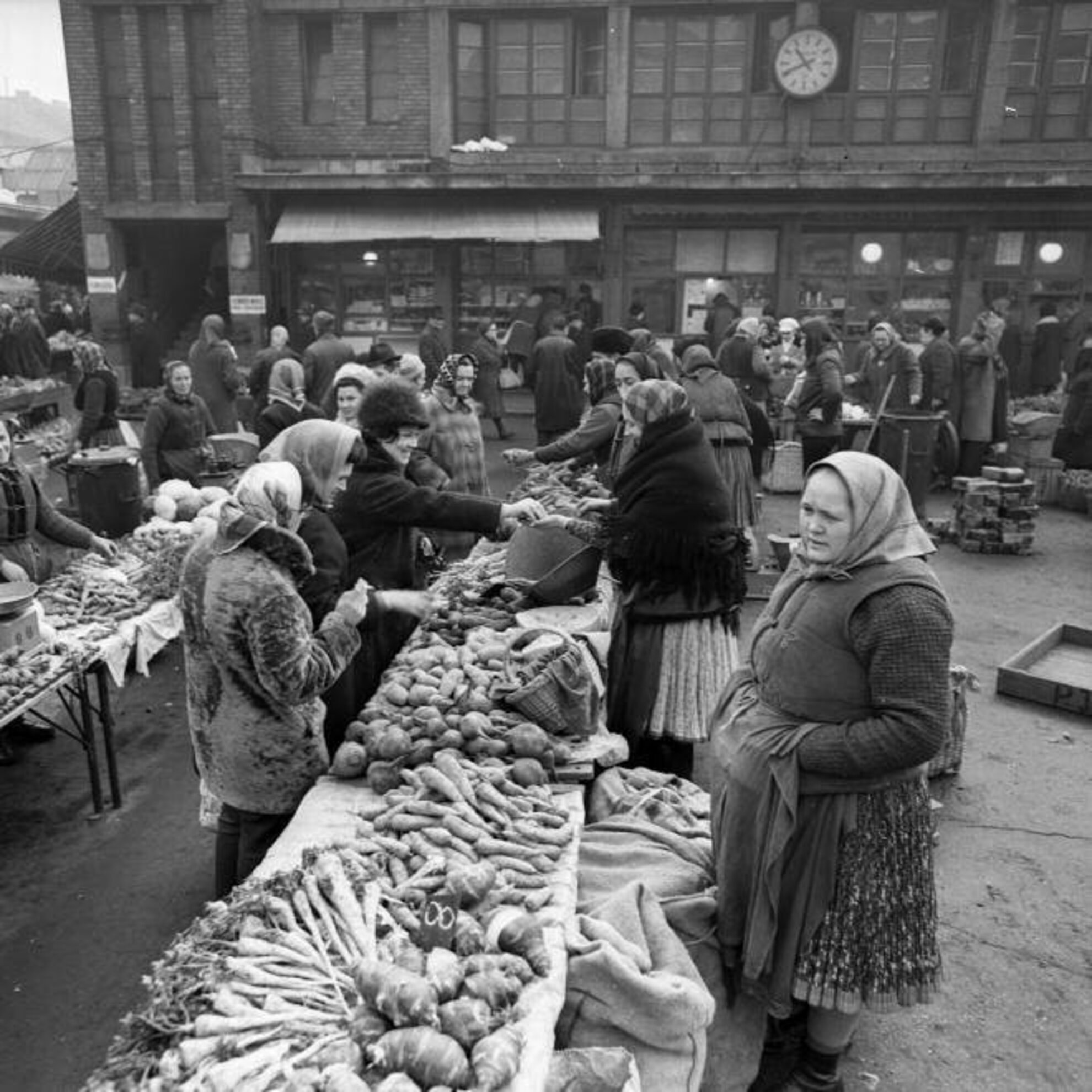
Garay tér market in 1971.
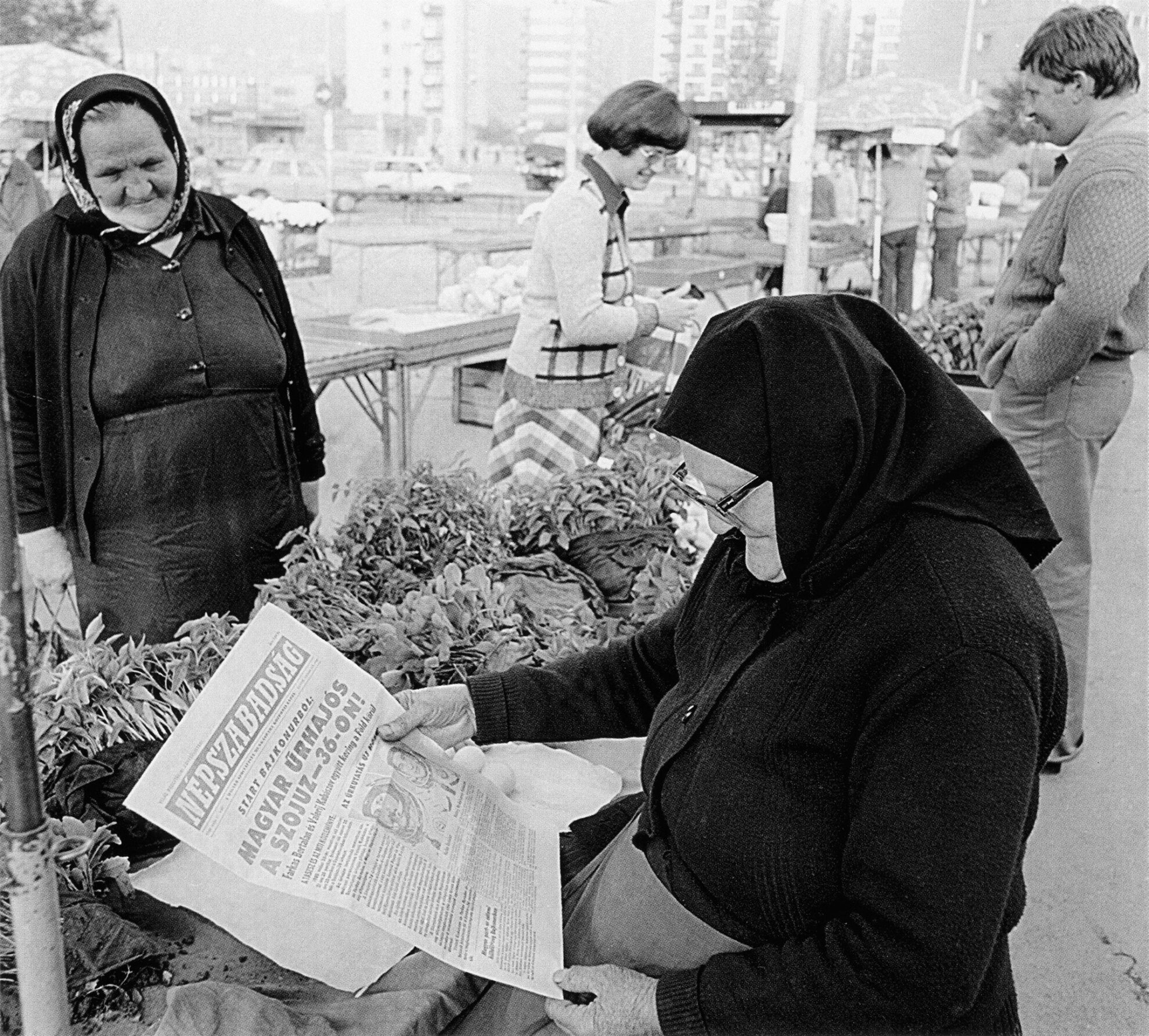
Óbuda market in 1980, with Vörösvári út in the background. Based on what we can see in the newspaper, this picture was taken when Bertalan Farkas became the first Hungarian in space.
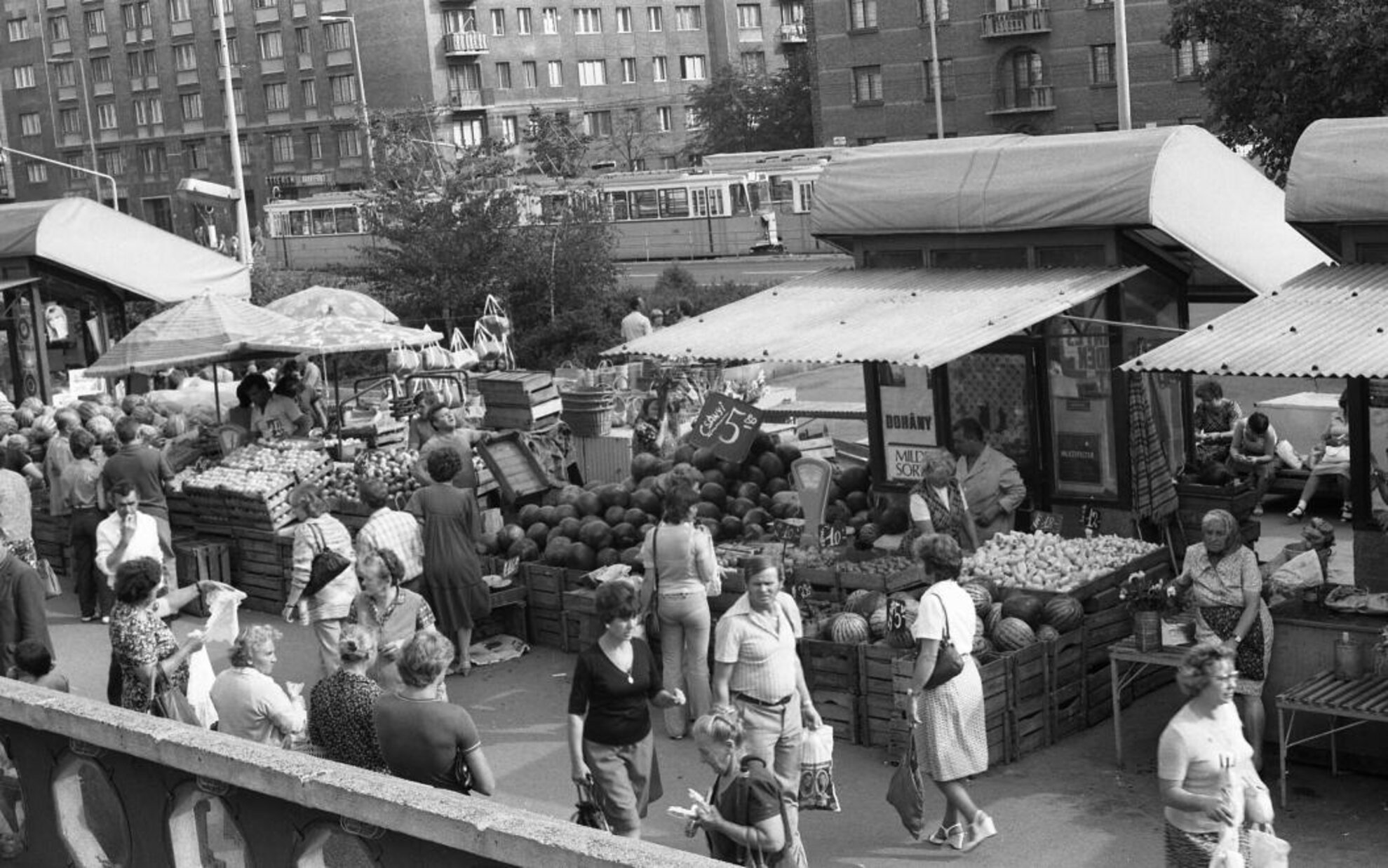
The outdoor area of Fehérvári út market, with the terminus of tram 4 in the background, captured in the summer of 1982 – melons were only five forints a kilo!
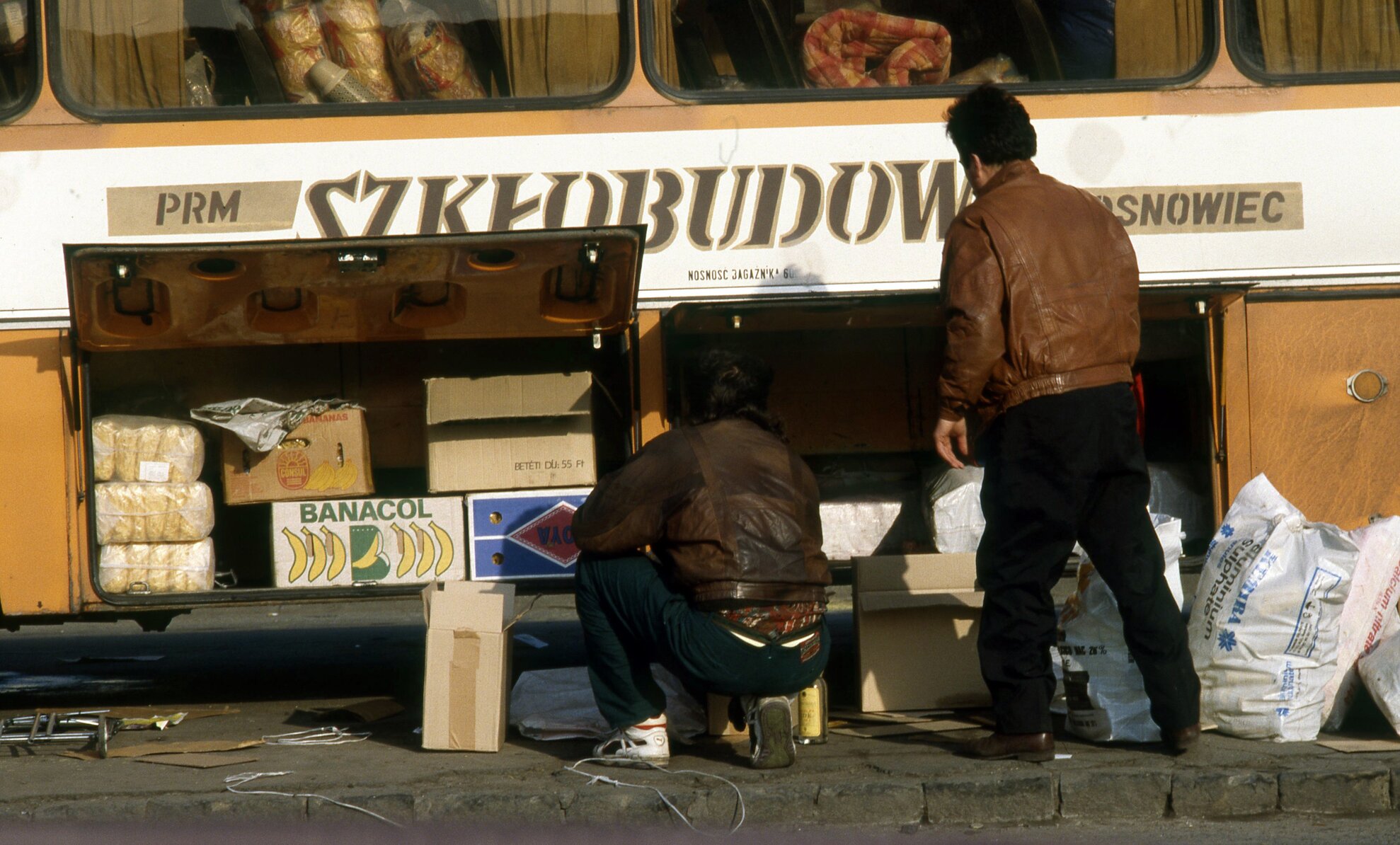
A COMECON market, aka Polish market. Under Communism, these popular places functioned both as flea markets and outlets for questionable Western goods. Fake Rolex watches, Moskvich cars with pedals, proper chocolate and real coffee were some of the most popular items. They got their nickname when Poland announced national bankruptcy in 1980, and the government decided to allow citizens to sell items abroad to supplement their income.
